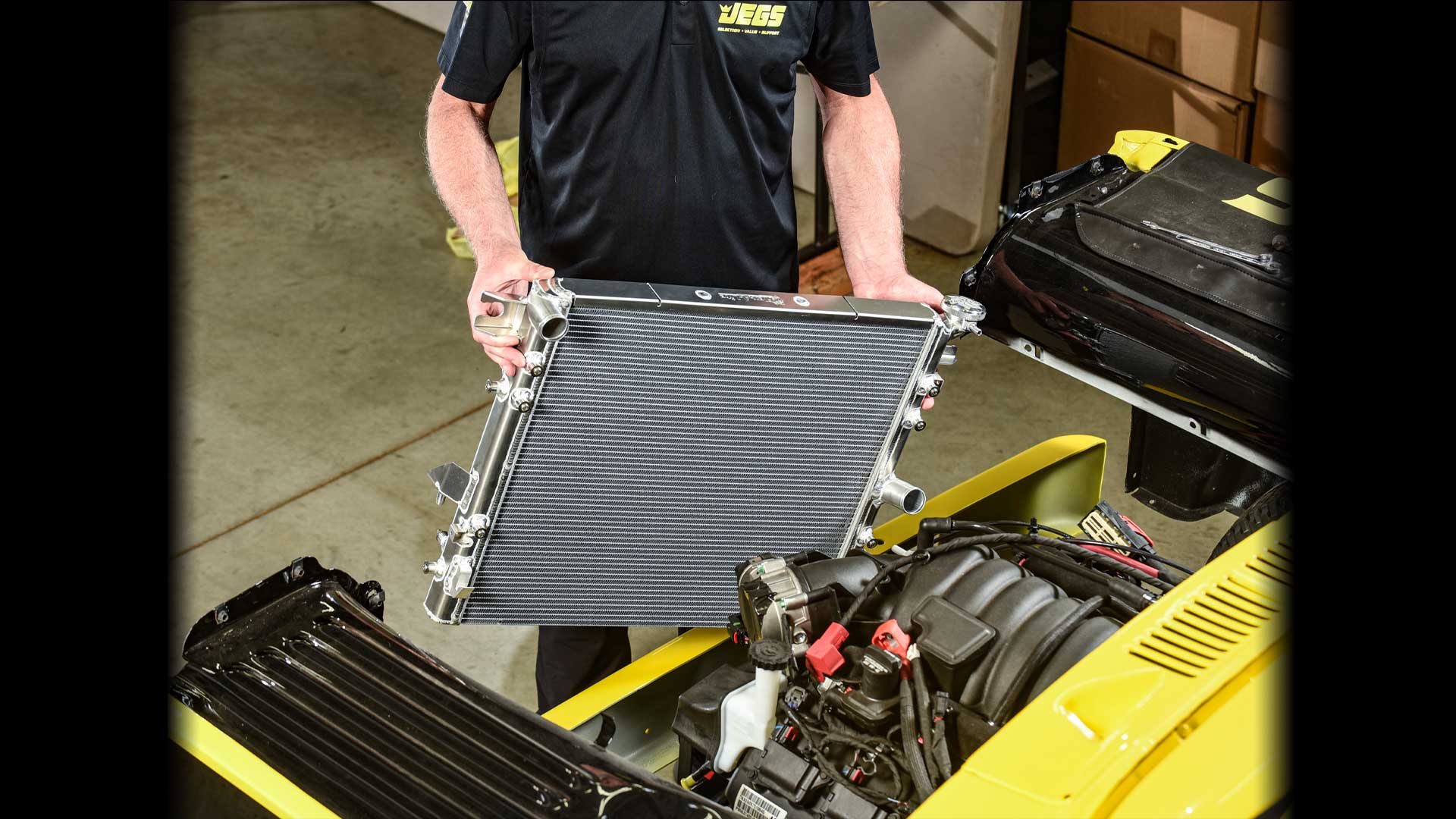
Performance Auto Cooling Solutions
Repairing or upgrading your auto cooling system parts, automotive ac parts, or heating system is necessary for both engine performance and drive/passenger comfort. JEGS offers a wide selection of cooling, auto ac parts, and heating products from brands such as Vintage Air Conditioning Parts, Champion Cooling Systems, Mishimoto, Flex-a-lite, Be-Cool Radiators, JEGS Radiator, and others. JEGS also offers many products to help you create your own custom cooling, AC, or heating system.
What Are the Different Types of Cooling Systems in Automobiles?
Automobiles use various types of cooling systems to maintain the temperature of the engine and prevent overheating. The two primary types of cooling systems in automobiles are:
- Air Cooling System: In this system, air is used to dissipate heat from the engine. It typically involves fins and fans to facilitate heat exchange. Air-cooled engines are common in some older vehicles and certain motorcycles.
- Liquid Cooling System: The majority of modern automobiles use liquid cooling systems. These systems circulate a mixture of water and coolant through the engine and a radiator to dissipate heat. Liquid cooling is highly efficient and helps maintain the engine's optimal temperature range.
What Are the Disadvantages of a Liquid Cooling System in an Engine?
While liquid cooling systems are prevalent in modern engines, they do have some disadvantages:
- Complexity: Liquid cooling systems are more complex than air cooling systems, involving components like radiators, pumps, hoses, and coolant. This complexity can lead to higher maintenance costs.
- Weight: Liquid cooling systems add weight to the vehicle, which can affect fuel efficiency and overall performance, particularly in racing applications.
- Potential Leaks: The use of coolant in liquid cooling systems means there's a risk of leaks, which can lead to engine damage if not addressed promptly.
How Much Does a Performance Cooling System Cost?
The cost of a performance cooling system can vary widely based on several factors, including the type of vehicle, the specific components needed, and the brand. On average, a performance cooling system can range from a few hundred dollars for basic upgrades to over a thousand dollars for high-performance systems.
Performance cooling systems often include upgraded radiators, fans, water pumps, and other components designed to enhance cooling efficiency. When considering a performance cooling system, it's essential to assess your vehicle's needs and budget to choose the right solution for your requirements.